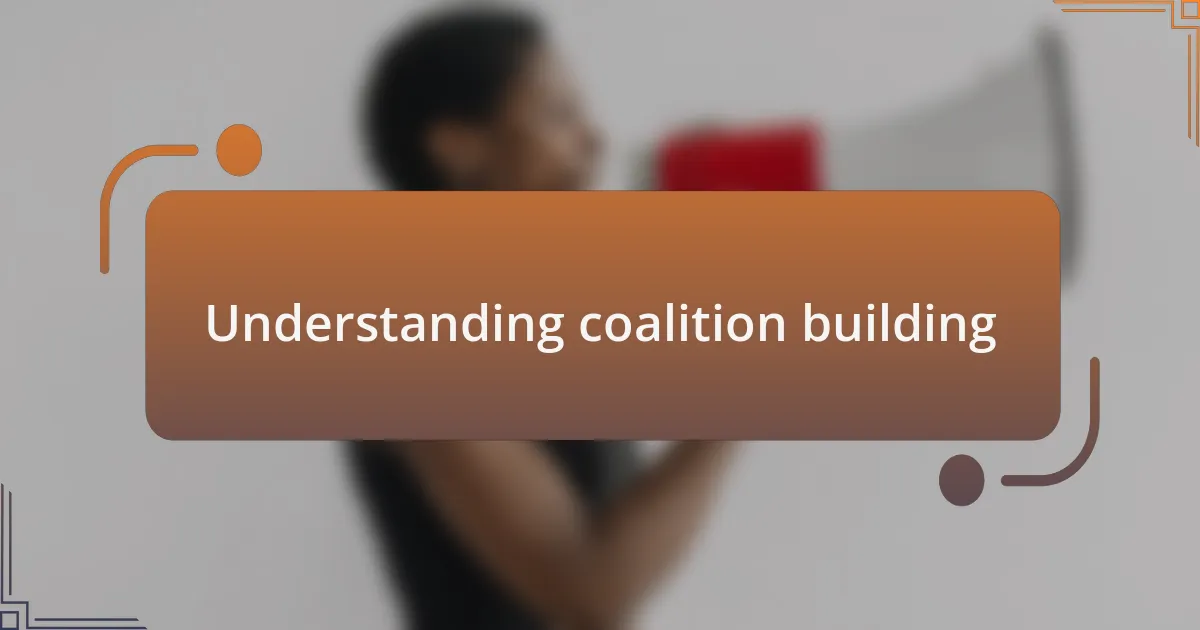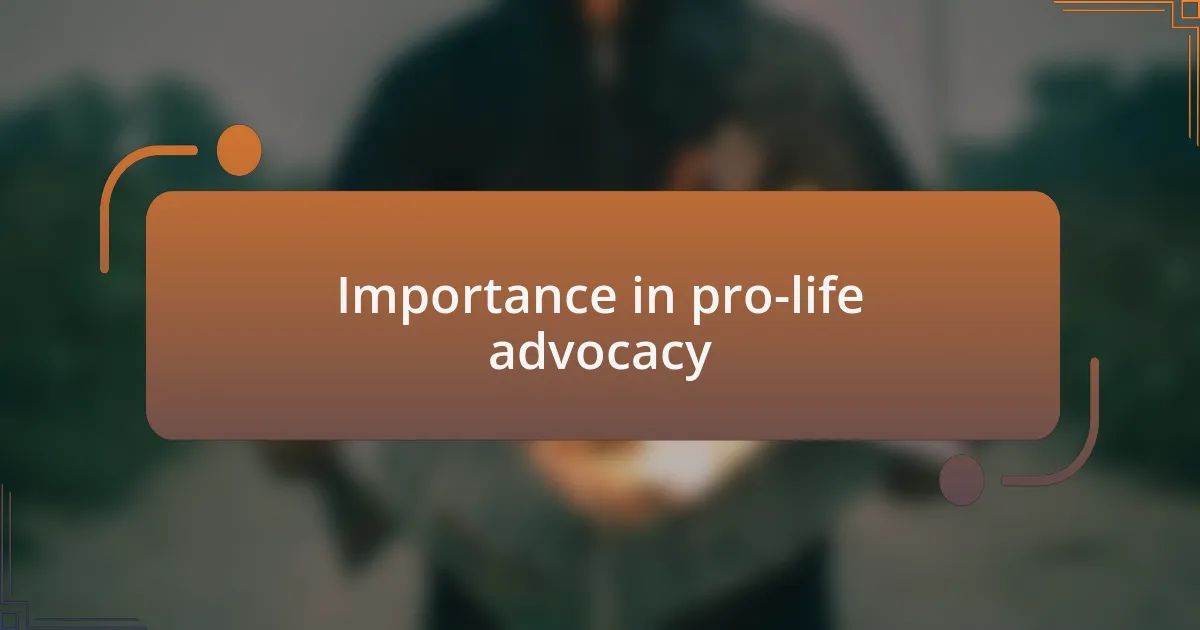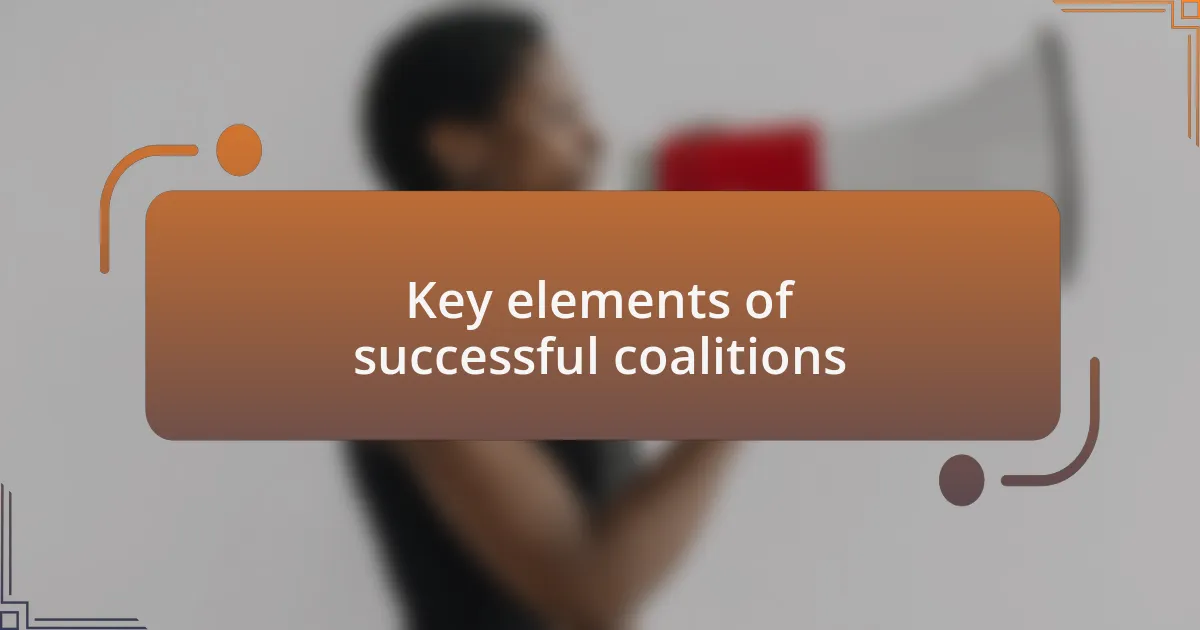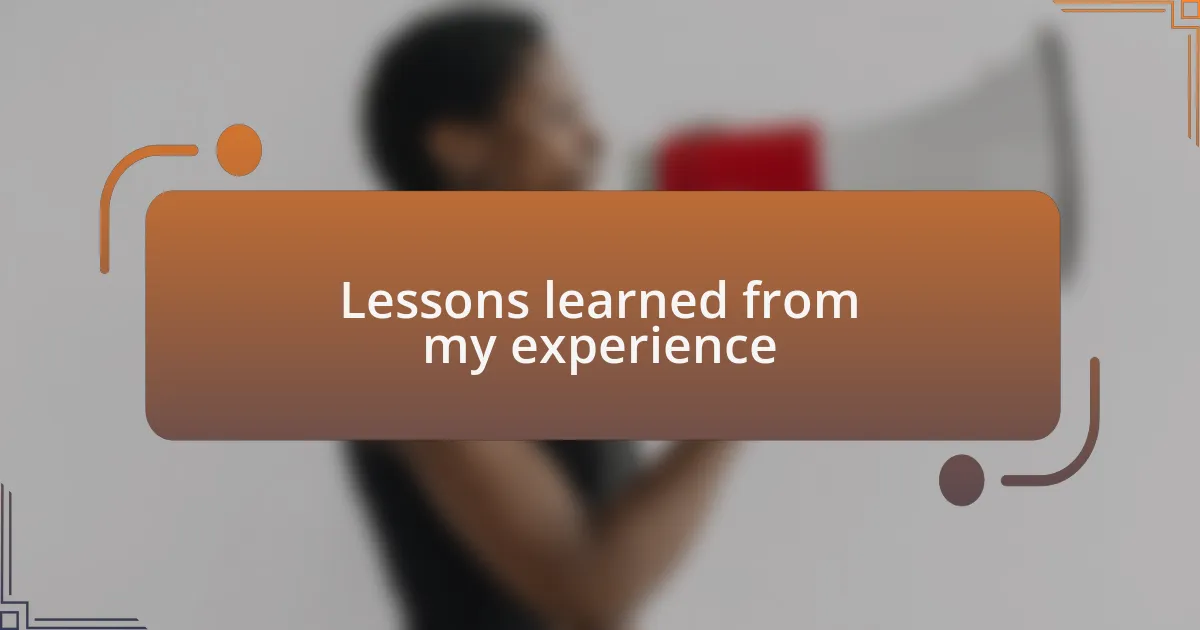Key takeaways:
- Identifying common ground and fostering trust through open communication are essential for successful coalition building.
- Coalition building enhances advocacy efforts by pooling resources and creating a more powerful collective voice.
- Adaptability and active listening are crucial skills for leaders to engage all coalition members and innovate in response to challenges.
- Recognizing contributions and establishing shared goals foster commitment and strengthen the coalition’s resolve.

Understanding coalition building
When I first delved into coalition building, it struck me how essential it is to identify common ground among diverse groups. I remember sitting in a room filled with advocates from different faith backgrounds; we shared a tangible sense of purpose despite holding varying beliefs. What’s fascinating is how that collective energy can genuinely amplify our individual efforts.
Building coalitions isn’t just about bringing people together; it’s about fostering meaningful relationships. I still vividly recall the hesitation I felt when reaching out to a group I hadn’t engaged with before. But once I stepped out of my comfort zone, I discovered a shared passion for the pro-life cause that bonded us instantly. Have you ever thought about how breaking down those initial barriers can lead to profound collaboration?
Understanding the dynamics of coalition building means recognizing that it thrives on trust and communication. I’ve seen firsthand how open dialogues can dismantle misconceptions and forge lasting partnerships. It’s a beautiful process that often begins with a simple conversation, often leading to unexpected alliances that can drive significant change in our communities.

Importance in pro-life advocacy
The importance of coalition building in pro-life advocacy cannot be overstated. I once attended a local pro-life event where various organizations presented their perspectives. It was enlightening to observe how, despite our different methods and strategies, we all shared the same end goal: protecting the sanctity of life. This realization underscored for me that when we unite, we can create a more powerful voice that resonates beyond our individual capacities.
Moreover, I often think about the impact of coalition-building on grassroots movements. During a collaborative effort to organize a community rally, I was amazed at how many resources we pooled together to amplify our message. The synergy we created transformed a small event into something much larger, drawing in people who might not have engaged with the pro-life cause otherwise. Isn’t it profound how our collective strength can inspire broader community involvement?
What I’ve found most striking is that coalition building fosters a culture of inclusivity and understanding. I remember a particularly moving conversation with an advocate whose background was entirely different from mine. As we shared our stories, I realized that our unique experiences enriched our shared mission, providing a more holistic approach to the issues at hand. This experience opened my eyes to the myriad ways we can collaboratively address life-affirming initiatives, reminding me that diversity within our ranks is not just beneficial, but essential for lasting impact.

Key elements of successful coalitions
To foster a successful coalition, clear communication is paramount. I recall a time when I joined a multi-organizational meeting where our goals seemed to diverge. By simply laying out our visions and priorities in an open forum, we discovered overlapping values that proved foundational to our collaboration. Isn’t it interesting how sharing our intentions can illuminate common ground even among different perspectives?
Trust is another key element that can make or break a coalition. I vividly remember a project where mistrust lingered due to previous misunderstandings among members. By initiating team-building activities and sharing personal stories, we cultivated a level of trust that turned skepticism into support. Can you imagine how much more effective our efforts became once we built that vital foundation?
Lastly, maintaining a shared commitment to the coalition’s goals is essential for longevity. During a campaign, I noticed how one member’s wavering commitment influenced the team’s motivation. I found it essential to revisit our mission regularly and celebrate even small victories to keep our spirits high. How can coalition members remain dedicated if they lose sight of the common purpose? Keeping that focus allows everyone to see that their contributions matter deeply.

Lessons learned from my experience
Reflecting on my journey in coalition building, I’ve come to realize the importance of adaptability. There was an instance when our plans had to change drastically due to unexpected challenges. Instead of being rigid, I learned to embrace flexibility and view these hurdles as opportunities to innovate. How often do we cling to a set path, only to miss out on uncharted, rewarding routes?
Another vital lesson I’ve learned is the power of active listening. I remember a situation where I was so focused on sharing my ideas that I neglected to hear the concerns of quieter members. This led to a significant misalignment in our actions. By shifting my approach and actively encouraging input from everyone, I found that diverse voices led to richer discussions and more comprehensive solutions. Isn’t it fascinating how sometimes, stepping back can propel us forward?
Lastly, I discovered that celebrating progress, no matter how small, can rejuvenate a coalition’s spirit. After a long, exhausting campaign, I organized a simple gathering to acknowledge all the hard work everyone had put in. The joy and camaraderie shared that day reignited our collective passion. How does recognizing our achievements not only boost morale but strengthen our resolve? These moments of reflection can remind us of our purpose and fuel our commitment to the mission ahead.

Strategies for sustaining coalitions
A key strategy for sustaining coalitions is fostering open communication. In one instance, our coalition faced a significant decision point, and I noticed that not everyone was on the same page. So, I initiated a series of informal check-ins, where each member could voice their thoughts and concerns. This transparency transformed our dynamic—rather than feeling like isolated contributors, we began to see ourselves as a cohesive unit. How powerful it is to create a space where everyone feels valued and heard!
Another approach that proved invaluable was setting shared goals. During one campaign, we came together to define our objectives collaboratively, ensuring that every member’s vision was incorporated. This process not only aligned our efforts but also cultivated a sense of ownership among the members. Reflecting on that experience, I realized that when people feel invested in the outcomes, their commitment to the coalition deepens. Isn’t it remarkable how collective purpose can elevate individual passions?
Additionally, recognizing the importance of gratitude can work wonders. I made it a point to personally thank each member for their contributions, whether big or small. I vividly remember the smile on a newer member’s face when I acknowledged her creative idea for a fundraiser; it reinforced her belief in our mission. Simple gestures of appreciation can enhance loyalty and strengthen bonds within the coalition. Why shouldn’t we invest in positivity within our teams when it can lead to such profound impacts?